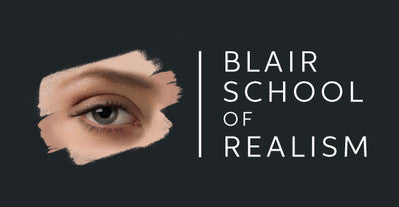Dru Blair: Airbrush - Foundations of Airbrush for Modelers Jan 31. 2026
Are you having trouble getting your airbrush to function properly?
Paint clogs, bad spray patterns, splatters, failure to spray... all will become a thing of the past..

Learn why professionals rarely experience airbrush problems
How do they avoid clogs? How can they paint without ever having airbrush issues? We will answer those questions.
What's the best paint to use?
Airbrush paint is available in many types. We will show you how to choose the right paint for your application.

Can't find the right reduction ratio?
It's difficult when you don't know what your target is. Dru will show you exactly how to dial in the ideal reduction ratio for ANY paint. In fact, he will demonstrate how to set the perfect ratio for several popular brands, as well as demonstrate how to dial in the pressure to match the reduction.
Can't find the answers on You Tube?
You aren't alone. Most of the YouTube channels contain false information, and if you are a new to airbrushing, there is no way to know fact from fiction. We will show you reliable methods that you cannot find anywhere else.

The right way to clean your airbrush.
Dru sets his airbrush up so that he rarely needs to clean it. He will show you how.
Stop struggling with your airbrush and make it work for you.
Without training, you could spend years (or more likely, decades) trying to figure everything out. Now you can master your airbrush in a fraction of the time that it would take if you tried to figure everything out on your own.

Color theory included
We aren’t just limited to teaching you all about the airbrush. We include color theory to help you match your colors perfectly.

What you will learn
01
Choosing the right airbrush
There are many different airbrush types to choose from, making it difficult to decide which is right for your needs. We will cut through the nonsense, and guide you towards the best choice.
02
Parts of the airbrush
Dru will go through the airbrush and discuss the part names, their function, and how to adjust it.
03
What is the best way to hold the airbrush?
There are lots of opinions regarding this topic We will lay out the facts and help you arrive at an optimal hand position.
04
How to set the correct pressure
There are several variables here. We will show you how to choose the right pressure for your airbrush and paint combination.
05
When and how to disassemble an airbrush
It is not always necessary to take your airbrush apart, but when you need to we will show you how to do it quickly and without damaging your airbrush.
06
Types of paint
Again, lots of choices here. We will show you how to choose the right paint for the job and avoid the types of paint that would give you problems.
07
How to fix mistakes
Sooner or later, we all make painting mistakes. If you don’t know how to repair a mistake, your painting will be compromised. We will teach you several ways to repair a mistake, so you will always choose the correct one for your painting.
08
How to aim your airbrush
Targeting can be elusive, but we will show you how to improve those skills.
09
How and when to use masks
Some edges are soft, some are hard, and some are in between. You will learn the shield techniques you need to create every type of edge.
10
Proper paint reduction
You will learn how to reduce the paint to the proper ratio.
11
Spraying on 3D surfaces
Working on 3D surfaces requires a different approach to avoid uneven coverage. We will show you how.
12
Stop clogs forever
One of the most frustrating obstacles that new air brushers encounter is a clogged airbrush. We will show you how to make that problem go away. Forever.
13
Drill exercises to improve your skills
Dru will show you a number of skill-building exercises to gain mastery of the airbrush.
14
How to stipple
A stipple pattern might be just the ticket to create that texture you need. Dru will show you different stippling methods to achieve those textures.
15
When to use Transparent paint
There are a lot of opinions as to whether transparent or opaque is better. The answer is that each possesses unique characteristics that need to be considered first.
16
The 3 variables for controlling your spray pattern
Frisket can be one of the best tools for creating crisp edges, but it can also cause problems with your painting surface. Paper has its advantages and disadvantages as a mask, too. You will learn all about both types.
17
Managing edges and transitions
The trickiest part of airbrushing is controlling edges. Adjusting existing edges is often necessary, but can be a bit tricky. We will teach you how to change the sharpness or softness of an edge, even after you’ve created it.
18
Masking techniques that work
A mask can be used in a variety of ways. For example, you could use split paper/frisket techniques, shield reveal or shield conceal methods to create a line. You will learn which masks are best for any given situation.
19
How to choose the right air source
There are lots of really bad choices out there. We will show you how to avoid those bad items.
20
How to clean your airbrush the right way
Which products work and which products you should avoid.
21
Products that work
Learn how to navigate through all the accessories offered for the airbrush to see which ones suit you and which ones are useless.
22
Troubleshooting the airbrush
Learn how to identify problems by symptoms, then learn how to solve those problems.
23
Choosing Colors
Here you will learn about color choices for greater realism, and color choices for more impact.
What students are saying

I attended Dru's workshop with the hope of learning to paint. I left with the ability to "see" and a system that allowed me to develop my own understanding of painting and colours. Your system has given me the freedom to explore my own creativity.
Paul MacDonald
(Air Art Studios) Australia

Dru's teachings showed me how to create great detail and gave me the ability to achieve PHOTOREALISM in my artworks. Thank you for pioneering the world of photorealism in airbrushing, I doubt I would have got here without your long nights and many experiments .
David Naylor
Spain

Dru's workshop influenced the way I paint and gave me some new concepts, knowledge and skills to implement into the way I worked today I recommend it!
Mitch Lowther
(Airbrush tutor) Australia
Why should you take this virtual class? Consider your options:
Option 1. You could give up on your dreams and continue doing what you are doing, but let's be frank. No one wants to spend the rest of their life wondering "what if?" You are here because you believe that you deserve to be a better artist than what you are now. You aren’t the kind of person who’s going to settle for mediocrity.
Option 2. You could try practicing on your own hoping to figure it out someday. It's very difficult and time-consuming without all the shortcuts that we could show you, but it's an excellent choice if you have all the time in the world.
Option 3. Enroll in this course and enjoy the benefits of step-by-step guided instruction. You get what you need without wasting years or possibly a lifetime of guessing. If you don’t have time to follow a live workshop, try our Classroom in a box series and learn from home.


Our
Guarantee
We are so sure that we offer the best airbrush course in the world that we are willing to offer you tuition money back if you don’t notice an improvement in your airbrushing after taking this course.
Dru Blair on fear & art

This Class held Virtually
If you are new to airbrushing, consider purchasing the Foundation kit and practicing ahead of time.
Classes typically run from 10 am until 4 pm with break for lunch around 1:00 pm.
Virtual Workshops
We are offering this class virtually via Zoom. You will receive a link the morning of the workshop. If your schedule prevents you from attending the full workshop, virtual students can view the video recordings from the workshop for two weeks after its conclusion. Click here for more information about our Virtual workshops.




